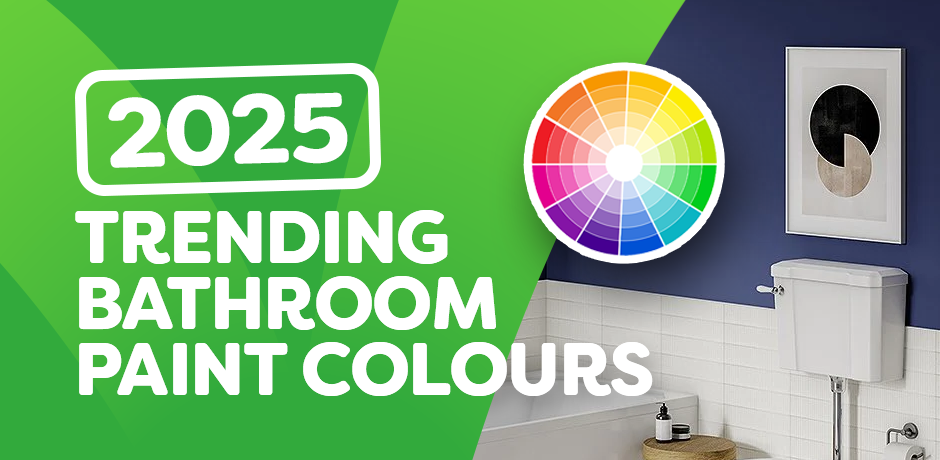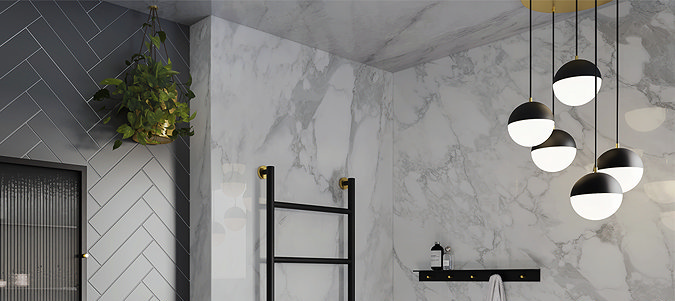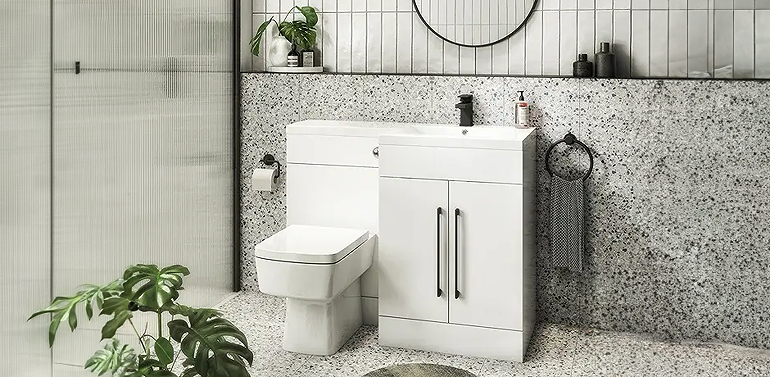EASTER OFFER: FREE DELIVERY ON ORDERS OVER £99!**
Delivery Offer Must End Soon!
most comfortable bath shapes
What is the Most Comfortable Bath Shape?
Finding the most comfortable bath shapes and styles: A breakdown.
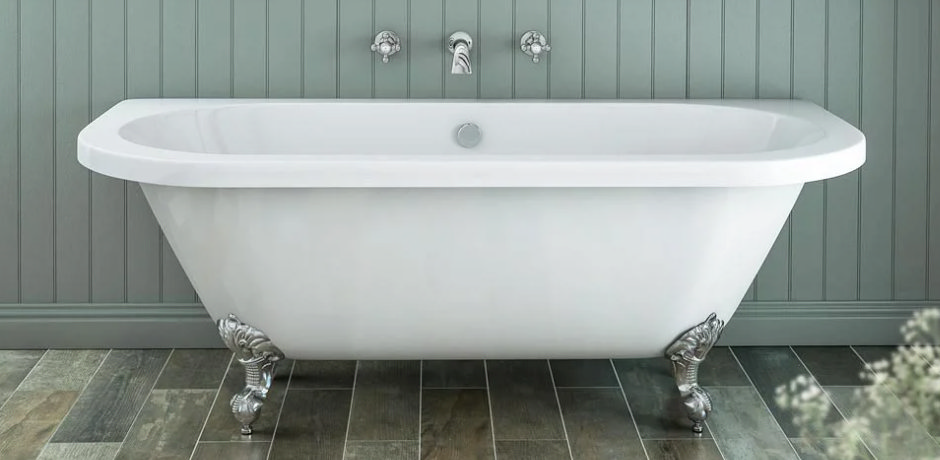
A bathtub is often considered the pinnacle of bathroom luxury and offers a sensuous experience. A long soak in warm bath water allows you to wind down and take a break from your daily routine. With a bath often being the centrepiece of many bathrooms, choosing a suitable shape for your eye-catching feature is important. Your choice often depends on how much available space there is, as well heat retention and comfort.
Some bath shapes offer more comfort than others. Each shape and style of has its own pros and cons. Overall, the classic oval-shaped bath offers superb pleasure for users, whilst also maintaining great visual appeal with clean, undisturbed lines. Additionally, oval tubs can be used as a freestanding bath or can be placed into rectangular drop in tubs. When selecting your new bath, think about internal space and focal point.

Why are oval baths the most comfortable?
Different bath shapes have different qualities. An oval-shaped bathtub, as opposed to a straight bath or corner tub, has inherent lumbar angles that allow your body to rest perfectly when you soak. This provides much-needed support and comfort for your back, without bath taps getting in the way. Oval bathtubs are very common, meaning that achieving your perfect length and depth is a lot easier when compared with other shapes and styles.
Ovals are also incredibly easy to clean compared to other bathtubs. The shape, alongside round bathtubs, lends itself to one continuous surface, ensuring it is easy to remove dirt. There are no harsh corners or crisp lines that dirt often gets stuck in. It can be difficult to remove with basic cleaning tools.
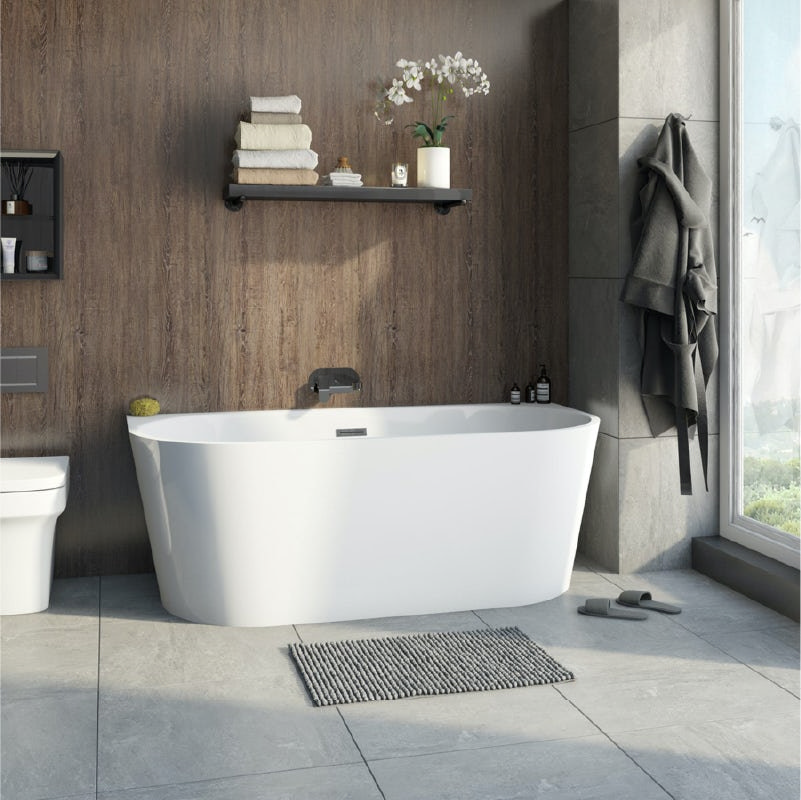
Oval bathtubs can come in a selection of designs, including freestanding baths or a classic roll top bath. The oval shape bath, particularly with a freestanding tub, is made out of dense materials that often result in heavy tubs. Cast iron and stone resin, although retaining heat, are extremely durable and very heavy materials. You may have to reinforce your bathroom floors in order to install such a tub, depending on whether there is enough space. If reinforcing isn’t an option, there are lighter materials such as acrylic that oval-shaped baths can be built out of. This is often a good choice for contemporary freestanding baths and a double ended bath. Corner baths and an inset bath can also be made from lighter pieces.
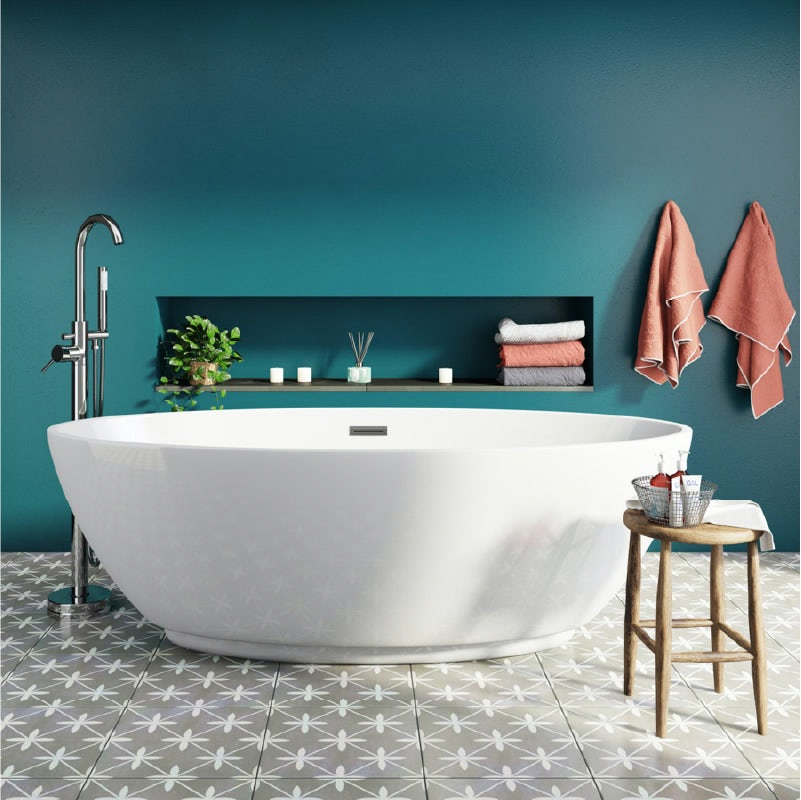
Other bathtub shapes
There are various other shapes that you can consider, depending on your bathroom space and room size. It also depends on whether you require a shower and what area of the room will be in consistent use. The bath shape should fit with your overall style and space considerations. Freestanding baths, for example, look regal and grand in a larger bathroom and a whirlpool bath suits a wide area.
Here are some other common shapes that are worth discussing when designing your bathroom:
Rectangular baths
A rectangular bath is often the most common type of bathing space found in houses. This style can be placed in the more common places that people want their bathtubs to be in. This includes features like alcoves or room corners in order to maximise space within the bathroom. Although often found against a wall, rectangular shapes come as freestanding baths as well. A freestanding bath takes up more floor footprint, but makes more of a statement.
This design is generally one of the more affordable and cheaper options available, with other materials to choose from. Rectangular shapes accommodate almost any kind of tub-style, including a sunken bath, corner bathtubs, built in baths and a combined bath. L shaped and P shaped shower baths are an extension of the traditional design, with many aspects that are similar.
However, a rectangular shape can be considered difficult to clean due to the hard-to-reach corners and bulky frame. Installing this type of bath in alcoves will require a fair amount of wall space that your bathroom may not have. Other features need to be looked at, as different shapes suit different rooms. This is an important consideration.
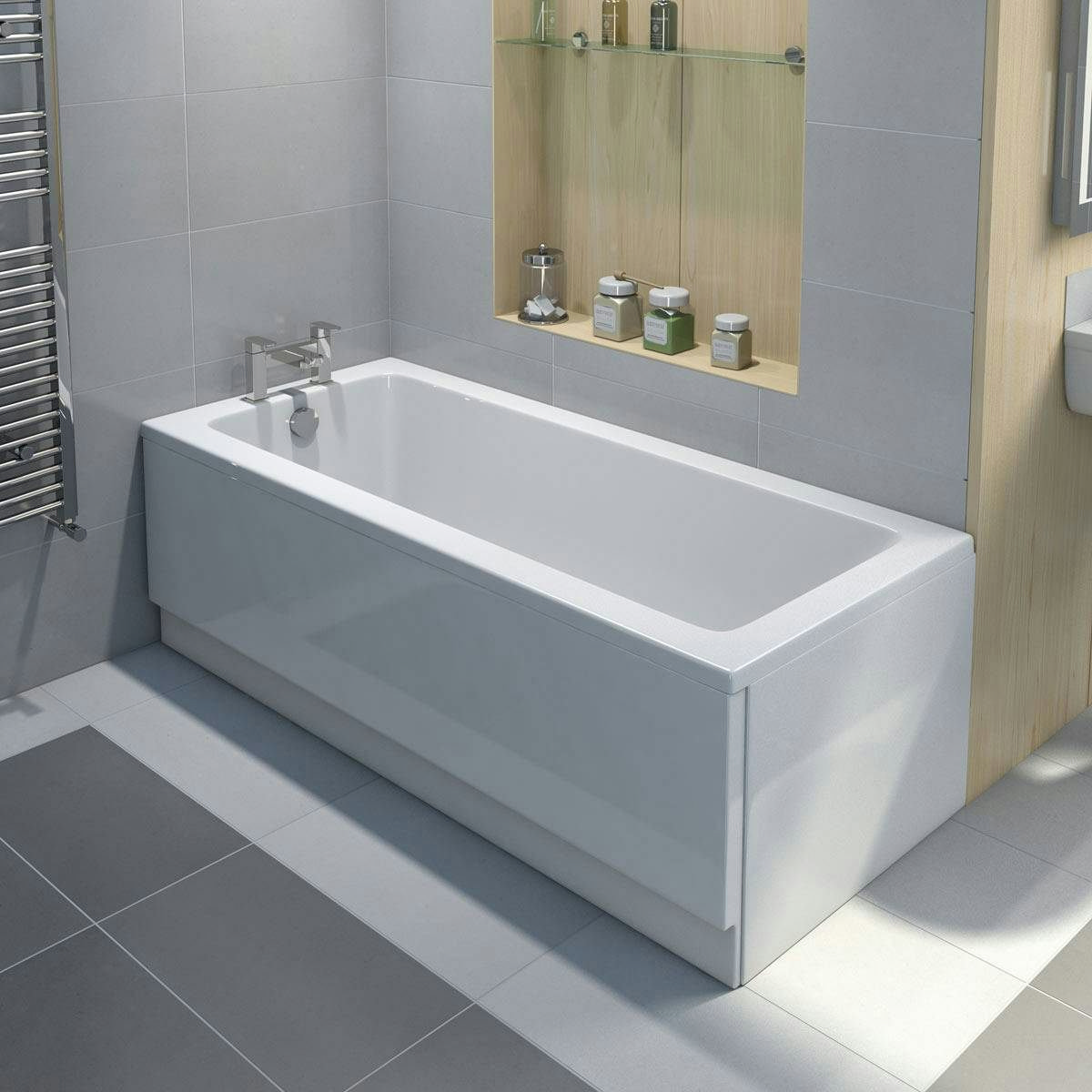
Square baths
A square soaking tub shares many of the benefits as rectangular baths. Features include the ability to install the design in corners as corner baths or into alcoves with little issues. There are also a few non porous material options to retain heat, such as acrylic, natural stone and cast iron. Square bath shapes can also provide circular bathing wells for added comfort to better align and support your body. Designs include double ended and freestanding options.
Owing to the square shape, you will generally need a larger tub (and thus more floor space) to fully accommodate adequate soaking space. Because the sides of the tubs are further away, it can be a bit difficult to enter and exit the tub. If space is an issue, a shower may be an alternative.

Slipper baths
The slipper bath is a shape with a luxury look and feel. This form of bath, also known as an angled tub, features a slope on one or either side. This provides neck support and increases the comfort for the user- something you do not get with corner tubs. Slipper baths are commonly designed for two people, where either side of the tub is sloped. The middle of the tub is also a fraction lower, providing cutouts for your arms to be perched on. This form of freestanding bath is perfect for a large, main bathroom.
Ergonomic bath shapes, such as the slipper, boasts not only an appealing appearance, but a place for couples to relax. This style is a great option for two people or for those who want maximum comfort at no expense. There can never be too much space, according to some users.
Due to the extended slopes, a slipper bath will need a lot more room and floor space than standard tubs. Slippers are often heavier due to the additional material, and can be tricky to install compared to light material baths. If you love this shape, you may have to factor in additional cost plus more space and reinforced flooring.
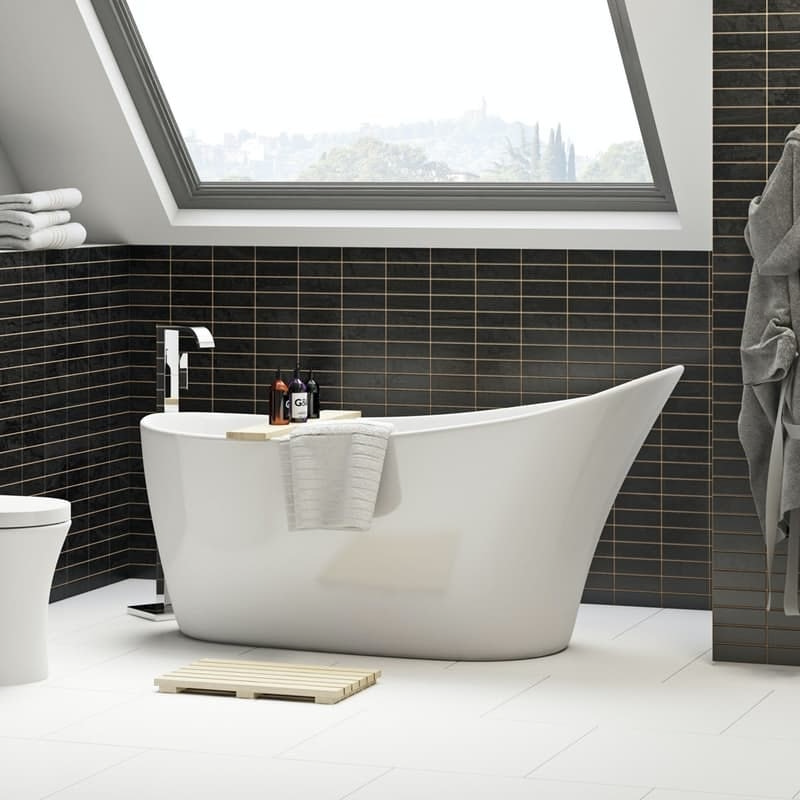
Hourglass baths
Hourglass baths are a modified version of a rectangular tub, whereby there is an hourglass shape moulded into the interior of the tub. This design provides a nice armrest and is often curved to provide sufficient back support as well. Many hourglass tubs are designed beautifully with plenty of deck space for soaps and shampoos.
The moulded shape inside the interior results in less space within the tub itself. The hourglass design, particularly with freestanding baths, is less space-efficient and is generally considered for single-occupant use. It can be difficult to integrate this shape into a bathroom as well, due to the large size and heavy weight. Reinforced flooring is often required. Additionally, the unique shape also means that it can be harder to get out of. The larger deck space means climbing out isn't straightforward.
Conclusion
Why do we recommend oval bathtubs when other options are easier to install or offer more ergonomic comfort? Oval bathtubs manage to do everything well enough, rather than excel in one particular area. The shape offers just the right amount of support to your back for comfort, whilst also being easy to install and nice to look at.
Additionally, oval bathtubs are more affordable and easy to shop for as many places stock various styles, sizes and colours. This shape represents a practical choice that saves not only your wallet, but also your time with simple maintenance.
Why not browse our full range of baths today, to find your perfect design?

